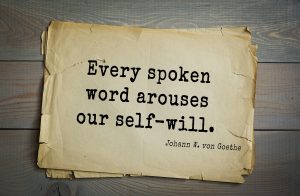
It had been a total failure. I had tried to introduce poetry to my class and have them write some, but they were reluctant and bored. However, something inside told me to give it another shot a few months later. I had been introduced to the concept at a TESL London workshop. The presenter was a convincing person and very nice, so
I had to try again.
I looked at ways I could do things differently. Since I teach levels 6 to 8, there were several resources I could draw on.
First, I asked them what they thought poetry was. You know what? I didn’t get much of a response. Things didn’t look too good – again.
So I went to phase two with a clip from Dead Poets’ Society.
I asked the question again,
“What is poetry?”
and followed it up with this clip and told them it was poetry.
I found a few other clips and asked them how this was different from everyday language, which is called prose. They supplied a few answers and became more interested, but only slightly.
We slithered off to the computer room. I gave them the assignment. They were going to write several poems of styles I had chosen. Most of the poems I write rhyme, so I felt I had to do some research. I wishfully googled “Types of poetry” and found this site. I never knew there were so many types! I started with the easy acrostic, slid to haiku, followed by tanka, diamante, cinquain, limerick, blank verse, and free verse. I finished it off with lyrics.
The students in my class are amazing. Sometimes through their own initiative, they show me what should be done. I was thinking that they would use Word to compose their poetry. No, they used PowerPoint! What would have been boring became much more exciting.
Still, there wasn’t much to celebrate. Then, I did something without thinking of it that changed the whole game. When the first person finished her acrostic, I praised it and put it on the wall. Like Daniel reading the writing on the wall at Belshazzar’s feast, they curiously filed up to the sacred text to see what the fuss was all about. They, too, were impressed. They soon followed up with their own acrostic.
But acrostics are pretty elementary. Haiku was next. I explained the format to them. Again, they found a better way. They clicked on the haiku hyperlink, selected the form, copied it, and pasted it into PowerPoint. Voilà, the form was in front of their eyes. All they had to do was execute the plan without flipping back and forth.
Then the real fun began. They had to figure out the syllables in each line. They learned that some words, like chocolate, are pronounced with fewer syllables than they seem. Also, they created a phrase, but had one too few or too many syllables. Quick, how do you find another word for love with one more syllable? How about passion? Where could they find such a word? An online thesaurus, that’s where! Soon they were discovering new words for the common words they already knew.
Each new form brought new challenges. They particularly delighted in the diamante. It requires adjectives, gerunds, and a transformation from one thought to another. One student moved cleverly from Burger King to Harvey’s.
I let them choose one of limerick, blank verse, and free verse. They all chose the limerick, which taught them about rhyming words and how to use a rhyming dictionary. Not only must the word rhyme, it has to make sense with the rest of the poem. In hindsight, I wish I had had them do free verse, though. Next time.
I found out that the more their words were posted on the wall, the more excited they became. They started sharing their feelings and opening up.
My role in all this became editor – pointing out when a certain form didn’t fit the criteria –, encourager and, eventually, fan.
The unit culminated in a poetry recital of their work. I had tried to persuade them to perform in front of another class, but they didn’t feel comfortable, so we didn’t. Through poetry, they got into the rhythm of the language, learning how to make long vowels even longer for effect and blending final consonants with beginning vowels of words.
I have included some examples of Student Poetry (no longer accessible) with their permission with this blog. I hope they delight you as much as they did to me.
I can’t wait until I get a new crop of students so they can playfully create beauty with the English language and answer the question,
“What will your verse be?”

What a wonderful outcome! I was in a workshop once in which the facilitator showed us a way that even literacy students can make poetry. One student from each group of three comes to the front to choose a post card. (Each time I visit a museum or art gallery, I come back with about seven art post cards, so I have a lot.) Interesting pictures from magazines could work, too. You give the students colour-coded strips of paper. They just come up with a couple of nouns, adjectives, a verb or two. Then they bring them up and magnet them to the board. Voila, poem! The one I remember is “Woman. Window. Red curtains. White snow. Looking.”
That sounds like fun, Kelly.
Wonderful way to Introduce poetry. I like the two videos shown in the beginning to hook your audience. Will do some of this in my class. Thanks John.
Tell me how it works out, Vineeta.